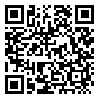Volume 9, Issue 18 (2023)
QHTS 2023, 9(18): 204-243 |
Back to browse issues page
Download citation:
BibTeX | RIS | EndNote | Medlars | ProCite | Reference Manager | RefWorks
Send citation to:



BibTeX | RIS | EndNote | Medlars | ProCite | Reference Manager | RefWorks
Send citation to:
pashazadeh R, zoodranj_s ص, Saeidawi A. Application of Vinay and Darbelnet's Strategies in Translation of Holy Quran (a case study of Translations of Nematollah Salehi Najafabadi, Mohammad Ali Koosha, and Karim Zamani). QHTS 2023; 9 (18) :204-243
URL: http://qhts.modares.ac.ir/article-10-66835-en.html
URL: http://qhts.modares.ac.ir/article-10-66835-en.html
1- PhD student of Arabic language and literature, Boali Sina University, Hamadan
2- Assistant Professor of the Department of Arabic Language and Literature, Boali Sina University, Hamedan ,zoodranj_s@yahoo.com
3- Assistant Professor of the Department of Arabic Language and Literature, Boali Sina University, Hamedan
2- Assistant Professor of the Department of Arabic Language and Literature, Boali Sina University, Hamedan ,
3- Assistant Professor of the Department of Arabic Language and Literature, Boali Sina University, Hamedan
Abstract: (3078 Views)
In recent years, the use of translation theories has become increasingly common in the field of Quranic translation, with the aim of creating a structured framework for evaluating these translations. Jean-Paul Vinay and Jean Darbelnet's book "Comparative Stylistics of French and English," which was first published in 1958, contains techniques that are widely used by translators. The present study aimed to examine the application of Vinay and Darbelnet's strategies in the translations of three Quranic translators, namely Niʻmatullāh Ṣāliḥī Najafābādī, Muḥammad ʻAlī Kūshā, and Karīm Zamānī. Using a descriptive, analytical, and confrontational method, the study evaluates the quality of their use of these strategies. The findings of the research indicate that, given the sanctity of the Quran and its unique linguistic features, the translators have tended to use literal translation more frequently than other components of direct translation. Among the indirect translation techniques, transposition has the highest frequency due to the differences in grammatical structures between Arabic and Persian. The adaptation technique, on the other hand, has a lower frequency due to cultural similarities between the two languages and the prohibition of excessive manipulation in Quranic translation. Zamānī and Kūshā have used indirect translation methods more frequently than Ṣāliḥī. In conclusion, this study sheds light on the use of Vinay and Darbelnet's translation strategies in the context of Quranic translation. It provides valuable insights into the approaches adopted by these three translators and highlights the importance of considering the linguistic and cultural nuances of both the source and target languages while translating the Quran.
Keywords: Holy Quran, Vinay and Darbelnet's Strategies, Salehi Najafabadi, Karim Zamani, Mohammad Ali Koosha
Article Type: Original Research |
Subject:
Arts and Humanities (General)
Received: 2023/01/16 | Accepted: 2023/05/13 | Published: 2023/03/1
Received: 2023/01/16 | Accepted: 2023/05/13 | Published: 2023/03/1
Send email to the article author
| Rights and permissions | |
 |
This work is licensed under a Creative Commons Attribution-NonCommercial 4.0 International License. |








